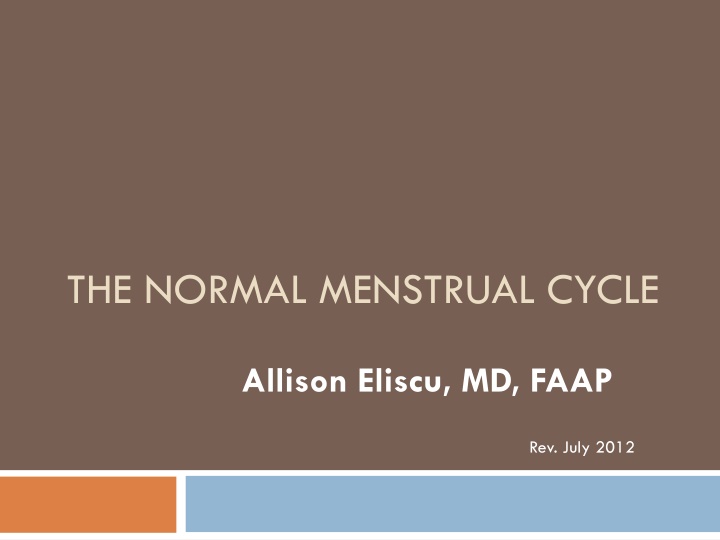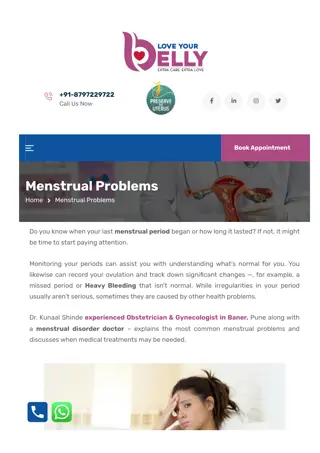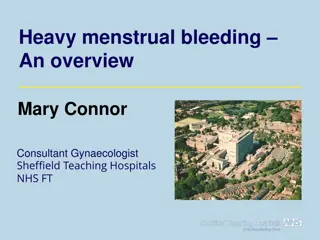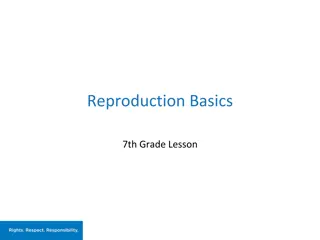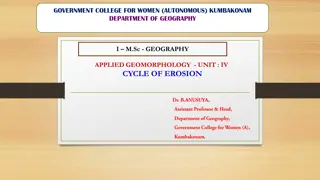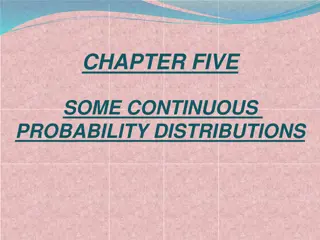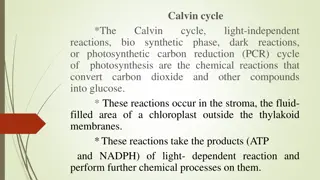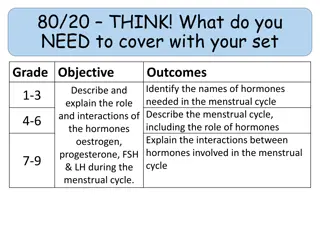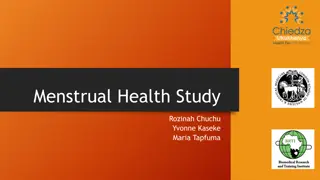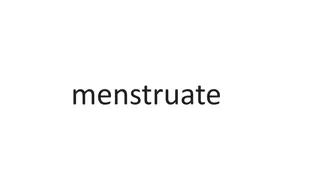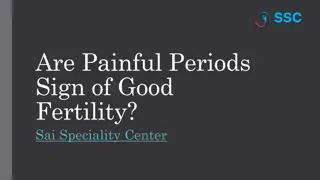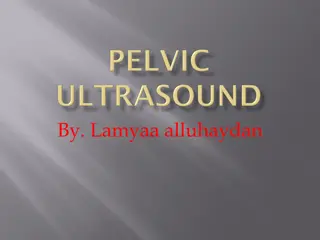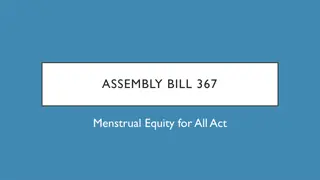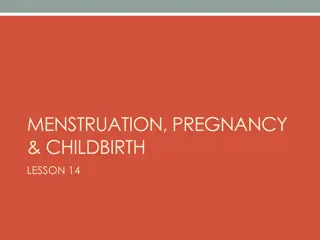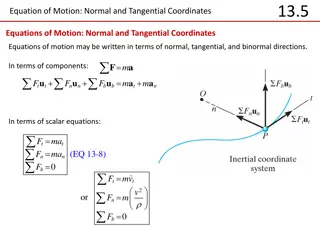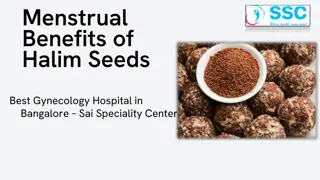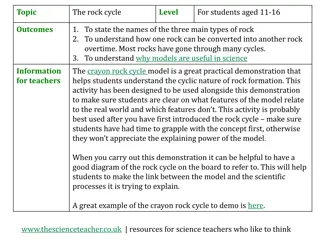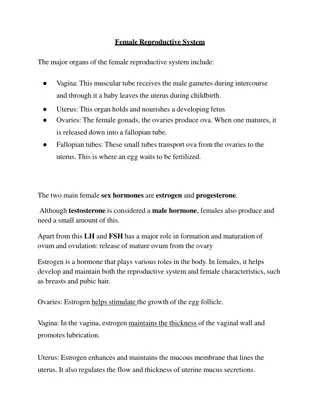THE NORMAL MENSTRUAL CYCLE
The normal menstrual cycle is essential for releasing a mature oocyte for fertilization. It consists of two main phases - the follicular phase (Days 1-14) and the luteal phase (Days 14-28), each characterized by specific ovarian and endometrial changes. During the follicular phase, a dominant follicle is chosen, estradiol peaks on day 13 causing an LH surge, and endometrial glands proliferate. In the luteal phase, a dominant oocyte is released, the corpus luteum secretes progesterone, and the endometrium prepares for implantation. If fertilization does not occur, hormonal levels decrease, leading to the shedding of the endometrial lining.
Download Presentation

Please find below an Image/Link to download the presentation.
The content on the website is provided AS IS for your information and personal use only. It may not be sold, licensed, or shared on other websites without obtaining consent from the author.If you encounter any issues during the download, it is possible that the publisher has removed the file from their server.
You are allowed to download the files provided on this website for personal or commercial use, subject to the condition that they are used lawfully. All files are the property of their respective owners.
The content on the website is provided AS IS for your information and personal use only. It may not be sold, licensed, or shared on other websites without obtaining consent from the author.
E N D
Presentation Transcript
THE NORMAL MENSTRUAL CYCLE Allison Eliscu, MD, FAAP Rev. July 2012
The Normal Menstrual Cycle Goal of normal menstrual cycle: release single mature oocyte to become fertilized Average adult cycle is 28 days Day 1 is first day of menses Cycle divided into 2 phases Follicular phase (Days 1-14) Begins with menses, ends with LH surge Luteal phase (Days 14-28) Begins with LH surge, ends with onset of menses
Follicular Phase Ovarian Changes Group of follicles recruited Follicles release estradiol Estradiol has negative feedback on LH and FSH Estradiol promotes follicular growth Dominant follicle chosen, others become atretic Estradiol peaks on day 13 causing LH surge Change from negative to positive feedback on LH Endometrial Changes Proliferation of glands
Luteal Phase Ovarian Changes Dominant oocyte released within 36 hours of LH surge Remains of dominant oocyte become corpus luteum Corpus luteum secretes progesterone Oocyte viable for up to 24 hours after ovulation Without fertilization, estradiol and progesterone decrease Endometrial Changes Progesterone causes organization of glands Prepares for implantation Without fertilization loss of endometrial blood supply Causes sloughing of endometrial lining (menses)
LH Surge Estradiol peak causing LH surge
